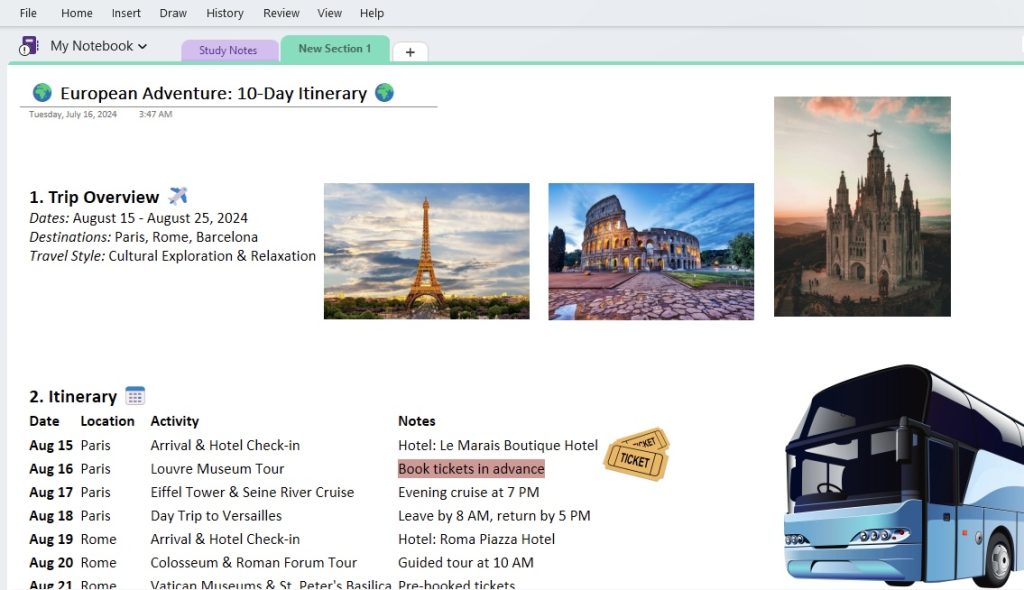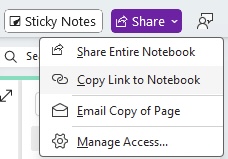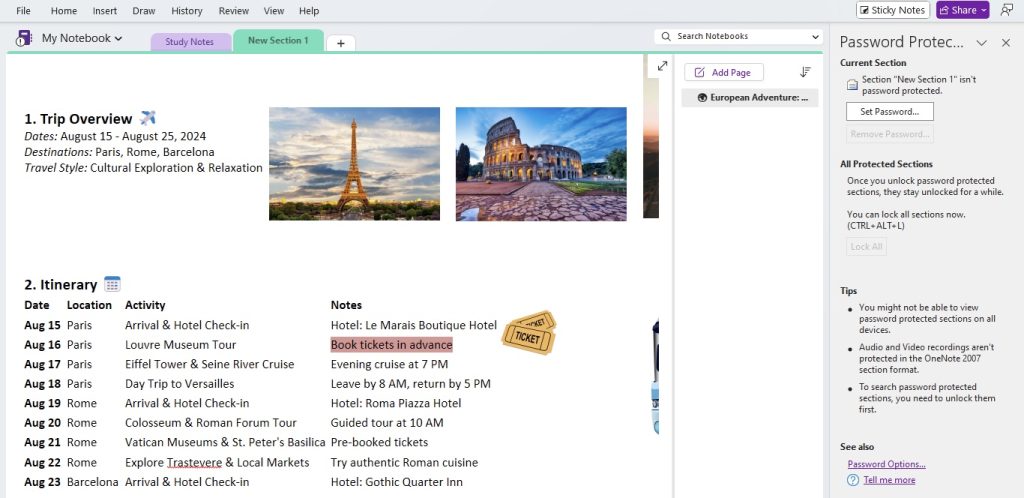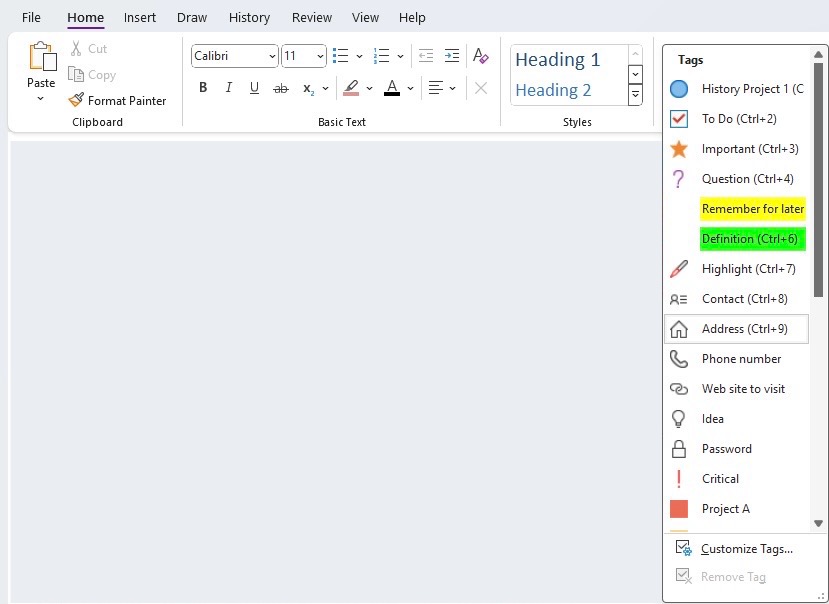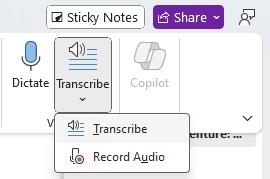Note-taking has come a long way from scribbling on parchment to the sophisticated digital tools we use today. Gone are those days when we were tied to the physical limitations of paper, having to cross things out or run out of space. Now, we have apps like OneNote that encapsulate the electronic age of note-taking—a transformation that’s not just about convenience but also about enhancing our capabilities to catalog and retrieve information dynamically.
Key Takeaways
- Microsoft OneNote is utilized for capturing and organizing digital notes, facilitating tasks including embedding Excel sheets, taking and sharing meeting notes, extracting text from images, and creating shareable shopping lists.
- OneNote offers a collaborative platform, with features allowing users to share their notebooks online and protect sensitive information with password-secured sections for both academic and professional purposes.
- The program enhances note-taking efficiency with capabilities such as tagging and highlighting critical information during classes or meetings, which can be revisited later for study or project management.
Overview of OneNote Capabilities
What is OneNote? It’s more than just a place for jotting down ideas; it allows us to store all types of content, including text, images, hyperlinks, and even audio and video. I particularly admire OneNote’s flexibility to function across various devices and operating systems, meaning the information I need is always at my fingertips, whether I’m on a PC, tablet, or phone.
Aside from its multimedia support, OneNote’s real-time collaboration feature enables me to work with a team seamlessly. We can share notebooks and see each other’s changes as they happen. Imagine having a meeting without paper—OneNote can be our shared digital whiteboard where we flesh out ideas live! Additionally, I find the security options reassuring, knowing that sensitive information stays protected behind robust Microsoft security features.
To summarize, OneNote is a powerhouse for information storage and retrieval, designed to adapt to both individual and collaborative environments, making it an indispensable asset in my digital toolkit.
Table of Contents
Core Features of OneNote for Efficient Note Management
Creating and Customizing Digital Notebooks
When I first started using OneNote, creating and customizing digital notebooks was a delight. The process felt familiar, like getting a brand-new physical notebook, but with endless possibilities for personalization. I can create as many notebooks as I need, each for different projects or subjects, and customize their names and colors for easy identification.
Within each notebook, personalization extends to the layout and structure, mimicking the freedom of a blank canvas. I can place text, images, or other content anywhere on the page, not confined by rigid lines or margins. Plus, the ability to embed files directly into a notebook page means all related documents are in one consolidated place.
For me, this creative freedom coupled with the organization is what sets OneNote apart as a digital note-taking solution. It doesn’t just mimic a physical notebook; it enhances and expands upon it in every way imaginable.
Organizing Notes with Sections and Pages
Organizing notes in OneNote is incredibly intuitive and flexible—it’s one of its standout features for me. I can create sections within notebooks, each acting like a tabbed divider, allowing me to categorize my notes by topic, project, or any other way that suits my workflow. And within each section, I can add as many pages as I want. I find it incredibly easy to keep everything from meeting minutes to research notes in order.
For instance, if I keep a notebook for work-related matters, I can have different sections for various projects or clients and then have pages for individual meetings, tasks, or ideas related to each one. Moreover, if I realize that a page would serve better in a different section or notebook, I can effortlessly move or copy it there.
The real clincher for me is how OneNote allows my note organization to mirror the way my brain categorizes information. It’s like having a digital representation of my thought processes, which I can always rearrange and adapt as needed.
Diverse Uses of OneNote Across Platforms
Enhancing Team Collaboration with Shared Notebooks
I’ve witnessed firsthand how OneNote supercharges team collaboration. By sharing notebooks, my colleagues and I can contribute collectively to a centralized information hub. OneNote simplifies the feedback and brainstorming process—everyone involved can access and edit the same notebook.
The real-time sync feature is indispensable as it enables us to see updates and changes instantaneously. This ensures that all team members are on the same page, both figuratively and literally, preventing the confusion that typically accompanies version control in documents. And what’s more, I can manage who has view and edit permissions, making collaborative efforts not only synchronized but also secure.
In my experience, shared notebooks are perfect for projects that require step-by-step collaboration or when several stakeholders need to contribute input. It reduces email clutter and streamlines our work processes—ultimately boosting productivity and team synergy.
Integrating with Office 365 and Other Apps
Integrating OneNote with Office 365 has significantly improved my productivity. What impresses me the most is how effortlessly it blends with other Microsoft applications. For example, being able to send emails from Outlook directly to OneNote, or vice versa, enhances the way I manage information and tasks. It means less switching around and more doing.
But we’re not restricted to just Microsoft products. The array of plugins available, like those connecting OneNote with Salesforce, Trello, and Slack, through services like Zapier, is a boon. This interconnected ecosystem means that data flows smoothly between the apps I use the most, ensuring that nothing falls through the cracks.
It’s this sort of integration that helps me see the whole picture of a project without losing sight of the details. We’re talking about a digital environment that’s tailor-made for multitasking professionals like me, looking to maximize efficiency without compromising on quality or security.
Advanced Functions That Set OneNote Apart
Handwriting Recognition and Drawing Features
One feature of OneNote that continues to impress me is its handwriting recognition and drawing capabilities. I can take notes in a meeting with a stylus or even my finger, and OneNote’s intelligent technology converts my scribbles into searchable, editable text. This is a game-changer, especially when I need to find points quickly within my handwritten notes.
Drawing in OneNote is more than just a basic sketching tool. It offers a range of pens and highlighters that add depth to my visual notes. I find this particularly useful when a concept is too complex for words alone or when I need to mark up a document or screenshot. Moreover, the insertable shapes and graphing tools mean I can bring in a level of precision to my drawings that paper simply can’t match.
Such features are a testament to OneNote’s versatility, turning it into a powerful tool for capturing and organizing information in all forms. It’s perfect for those brainstorming sessions where I need to quickly sketch out ideas or visually connect concepts.
Security Measures for Protecting Sensitive Information
Security is a chief concern when dealing with sensitive information, and OneNote addresses this head-on with several robust measures. I take solace in the fact that OneNote employs the same level of security found in other Microsoft services, such as data encryption at rest and in transit, user authentication, and meticulous activity monitoring.
What sets OneNote apart for me is the ability to password-protect individual sections. I often store confidential business information and personal notes that I wish to keep private, and this feature provides an added layer of security. Should I accidentally leave a section open, OneNote has a safeguard to automatically lock it after a period of inactivity, assuring me that my sensitive data won’t be left exposed.
This approach to security in OneNote reassures not only me but also the organizations I collaborate with, as it ensures that our shared notebooks are a stronghold for information privacy and integrity.
Real-World Applications of OneNote
Seamless Project Management with Digital Notes
OneNote has proven itself to be an invaluable asset for seamless project management. I can vouch for its efficacy in keeping project details organized, accessible, and updated in real-time, given my extensive use of it for various projects.
The key to OneNote’s suitability for project management is in its organizational structure—notebooks, sections, and pages—allowing me to break down a project into manageable parts. I can have sections for objectives, timelines, resources, meeting notes, and task lists, each with its pages that detail specifics. There’s unparalleled flexibility in how information is arranged and presented, facilitating a clear overview and helping me stay on top of deadlines.
Another functionality that has streamlined my project management is the tagging system. With custom tags, I can highlight actionable items, questions, or important facts. These can quickly be located when reviewing, ensuring that nothing is overlooked or forgotten.
OneNote really shines when combined with other Microsoft Office tools like Planner or To-Do, creating an interconnected system that propels project efficiency.
Recording and Transcribing Audio Notes for Accessibility
OneNote’s capability to record and transcribe audio notes is a standout feature for enhancing accessibility and convenience. I’ve found it especially useful during interviews or lectures where capturing every word is critical; instead of feverishly typing or writing, I can record the session and pay full attention, knowing the information is securely captured.
The transcription ability adds another layer of accessibility. Not only can I play back the audio, but I can also search through the transcribed text for specific mentions, a feature that is invaluable for going over lengthy recordings. The fact that OneNote recognizes spoken words is revolutionary for anyone who needs to review their notes for specific details later.
This feature has not only made note-taking more inclusive but has also facilitated different learning styles and preferences. People who may struggle with typing speed or those with certain disabilities can now engage with content in a way that suits their needs.
Accessing and Synchronizing Your Notes Anywhere
Cross-Device Syncing with OneNote
The cross-device syncing of OneNote is one of its most liberating features, allowing me to capture, access, and update my notes across multiple devices. What appeals to me is the seamless transition from working on a desktop in my office to reviewing those same notes on a tablet or phone while commuting or being away from my desk.
My experience with the syncing process is that it is incredibly smooth and reliable. I start taking notes on my laptop, sketch ideas on my tablet at a café, and make quick updates using my smartphone. By the time I’m back on my laptop, all these notes are up to date, without any manual intervention. This level of synchronization ensures that my latest notes are always at hand, which is essential in today’s fast-paced world.
The core of this feature lies in OneNote’s deep integration with OneDrive. As soon as I make a change, it’s automatically saved and synchronized. For anyone like me who juggles tasks between various devices, this feature is a game-changer.
Offline Access and Real-Time Collaboration
The beauty of OneNote’s offline access is that I’m never tethered to an internet connection to work on my notes. Whether I’m on a flight or in an area with spotty Wi-Fi, I can review and edit my notebooks without interruption. As soon as I reconnect to the internet, all changes are automatically synchronized across my devices and shared notebooks.
Real-time collaboration, on the other hand, enhances my teamwork experiences. When connected, I can see my colleagues’ contributions as they happen, which brings a new level of dynamism to our projects. We can work simultaneously on different parts of a project, observe each other’s thought processes, and input live feedback. This interactive environment maximizes the collaborative spirit and productivity in every session.
To me, the combination of offline access and real-time collaboration is a testament to OneNote’s dedication to user freedom and teamwork. It caters to modern work habits by offering the flexibility to work whenever and wherever I am, while also providing a platform for spontaneous and cohesive group work.
Maximize OneNote for Education and Business
Building a Knowledge Repository for Teams and Individuals
Utilizing OneNote to build a knowledge repository is a method I’ve come to depend on for keeping collective wisdom accessible and organized. For teams especially, it serves as a centralized database where every member can contribute insights, research, and solutions. This creates a living document, evolving with the growth and experience of the team.
For individuals, a knowledge repository in OneNote can be a personal encyclopedia on any given subject. I’ve constructed my own compendiums of professional development resources, technical guidelines, and even inspirational material. The intrinsic structure of OneNote with its notebooks, sections, and pages, along with its tagging system, makes categorization logical and retrieval effortless.
The dual benefits of this approach are clear: collective team knowledge is bolstered, and individual expertise is conserved. It’s like having an expert in your pocket or a team huddle just a click away.
Tailoring OneNote for Academic and Professional Development
Tailoring OneNote to suit academic and professional development is an approach that has benefited me significantly. For students and educators, OneNote becomes an interactive notebook—one that accommodates lectures, research, and group projects. I’ve seen educators create shared notebooks for classes, where students can find syllabi, submit homework, and collaborate on assignments.
In a professional context, OneNote acts as a personal career development tool, where I can track progress, set goals, and store certificates or important information from courses or workshops. It’s also an excellent place for reflection and self-assessment, helping me identify areas for growth by reviewing past projects and performance feedback.
By customizing OneNote to specific needs, it can foster a culture of continuous learning and improvement. Whether it’s academic pursuits or professional growth, OneNote provides the framework for a tailored, comprehensive development plan.
FAQs: Navigating the Basics and Beyond
How does OneNote differ from other note-taking apps?
OneNote stands out from other note-taking apps with its deep integration with the Microsoft ecosystem and its free-flowing canvas approach, where I can place text, images, and other elements anywhere on the page. Its superior organizational system with notebooks, sections, and pages makes structuring and finding content a breeze. Furthermore, features such as real-time multi-user collaboration, reliable syncing across multiple devices, and robust security options give it an edge in versatility and functionality.
Why should I use OneNote instead of Word?
I should use OneNote instead of Word when my priority is gathering, organizing, and collaborating on ideas rather than shaping final documents. OneNote’s flexible canvas and notebook structure are ideal for brainstorming and project planning, whereas Word is tailored for formal document creation with advanced formatting and layout options. Both tools serve distinct purposes and complement each other within the Microsoft suite.
Can OneNote be used for project management?
Absolutely, OneNote can be a powerful tool for project management. Its organizational structure, where I can create distinct notebooks, sections, and pages, offers an intuitive way to compile project materials and keep them orderly. OneNote facilitates collaboration with shared notebooks, task management through to-do lists and tags, and integration with other Microsoft apps, making project tracking and team coordination efficient and effective.
John Michaloudis is a former accountant and finance analyst at General Electric, a Microsoft MVP since 2020, an Amazon #1 bestselling author of 4 Microsoft Excel books and teacher of Microsoft Excel & Office over at his flagship MyExcelOnline Academy Online Course.

